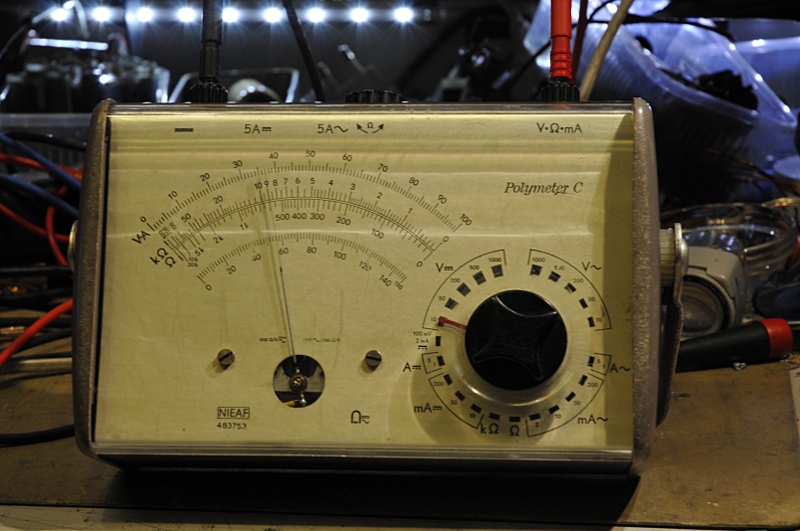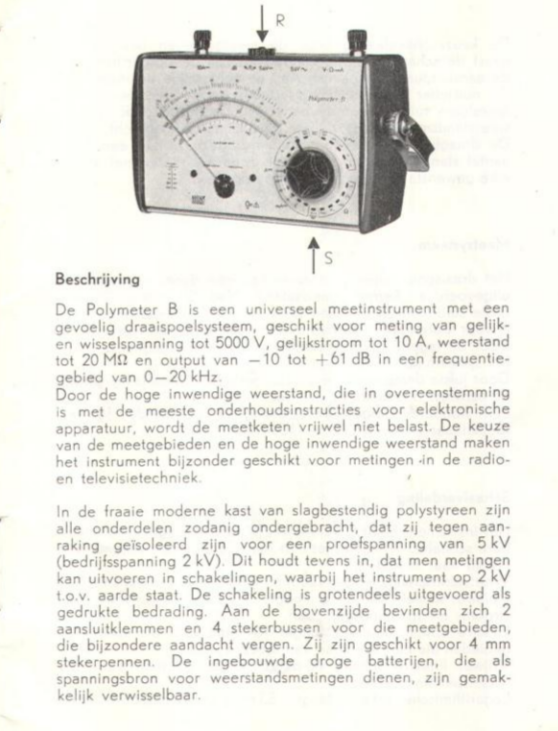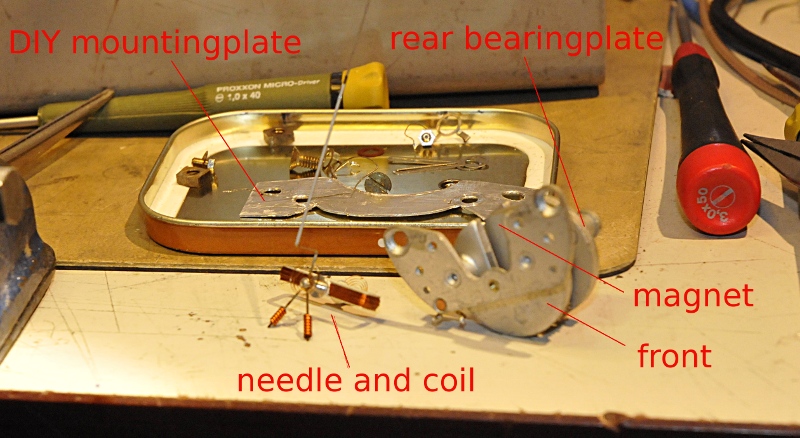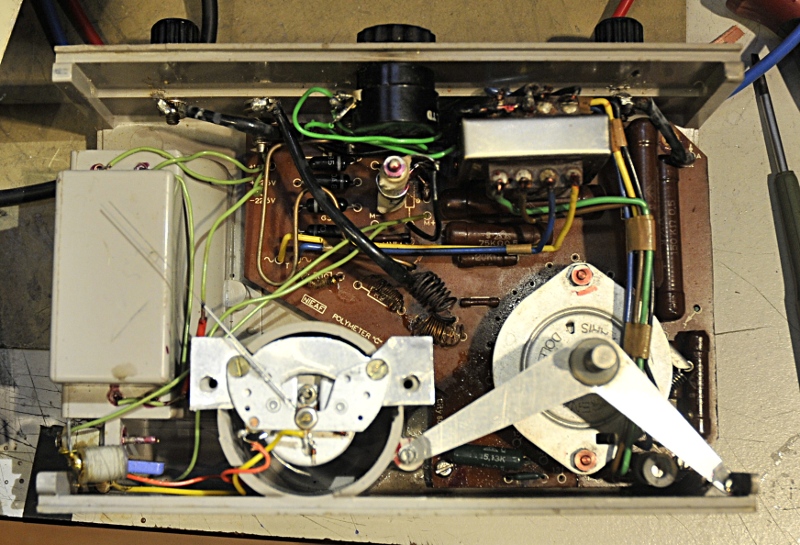This funny 1960’s radio shaped multimeter is from the Dutch company NIEAF, or the full name : Nederlandse Instrumenten en Elektrische Apparaten Fabriek. The company was founded in 1900 as NIF, 2 years later it became part of Smitt B.V. and in 1913 the name NIEAF was introduced. The company, today called: NIEAF Schmitt still exists and still makes multimeters. This meter was a gift from Christiaan, a fellow Circuits online member.
This Polymeter C is rather unknown. It looks a lot like the Polymeter B, a model that was also sold by Philips, but the C is limited to 500V and 5A and has less connection busses.
The name is probably derived from the material used for the cabinet, Polystyreen. Many Meters back then were made from Bakelite.
To bad the meter is not working. A current shunt is burned and it looks like the original meter was replaced by something else. The meter mount is DIY and they cut some material from the housing to make it fit. And the replacement is not very good.
On the picture it should be at 10V. The choise is 10V reading, but zero at 2V or zero at 0V and 8V instead of 10V like here. The problem is they probably had to reverse the connection for the zero setting, that is here on the back of the meter and flip that up side down too. So the springs are not very nice any more and to much, or not enough tension . As a test I build the zerospring back to the original setting. So the spring got more tension and then the meter nicely and quickly zeros but in that case the zero mechanism could not be used and there is no way to get it to zero without a scale, and with the scale you can not reach the zero spring. I did not test if the voltage in that case was correct. So I hope one day to find a usable D’arsonval meter (moving coil) and the missing battery door.
Here you see the DIY meter mount and burned shunt (above and right from meter)
It needs a 1,5V D cell and a 22,5V battery. If I, one day, get the meter to work again the 22,5V battery is easy to replace. Just build a little boostconverter powered by the 1,5VDC





